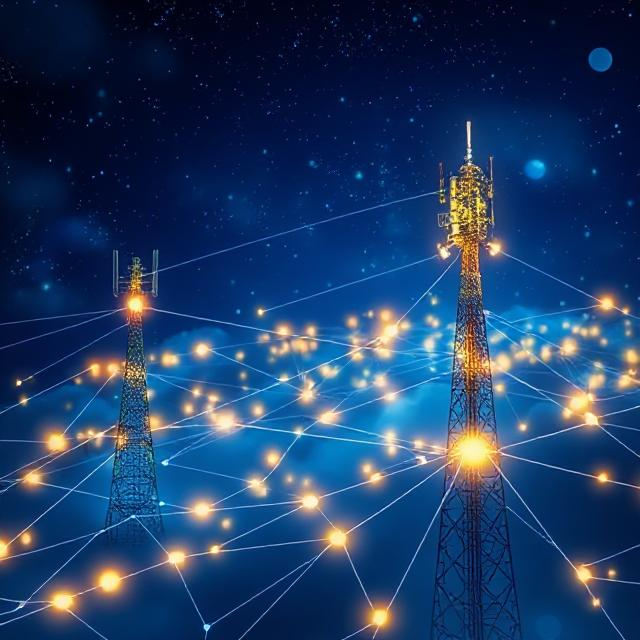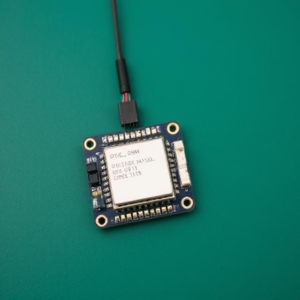GSM (Global System for Mobile Communications) is a widely used technology for mobile phones and wireless communication. It’s the standard for 2G (second-generation) mobile networks, used for voice calls, text messaging, and data transmission.

1. GSM Network Architecture and Working
The GSM network is made up of several components that work together to provide mobile communication services. Here’s how it works:
- Mobile Station (MS): This is the device we use to communicate, like your mobile phone. It consists of the mobile equipment (phone) and the SIM card, which stores your identity and allows you to access the network.
- Base Station Subsystem (BSS): The BSS connects mobile phones to the network. It consists of:
- Base Transceiver Station (BTS): This is the antenna and equipment that communicate wirelessly with your phone.
- Base Station Controller (BSC): This manages several BTSs, controlling the communication between the mobile phone and the network.
- Network Subsystem (NSS): This is the part that handles all the important management and switching in the GSM network:
- Mobile Switching Center (MSC): It controls the routing of calls and messages.
- Home Location Register (HLR): A database that stores details about subscribers, like their phone numbers, plans, and locations.
- Visitor Location Register (VLR): A temporary database that stores information about subscribers when they roam to a different area.
- Operation and Support Subsystem (OSS): This is the part responsible for managing and maintaining the whole network.
How it works:
- When you make a call or send a message, your phone communicates with the BTS, which then passes the signal through the BSC to the MSC. The MSC then ensures that the call or message reaches its destination by talking to the HLR or VLR.
2. Frequency Bands and Channels in GSM
- Frequency Bands:
- GSM operates in different frequency bands in various regions of the world. The frequency bands used by GSM are mainly:
- 900 MHz and 1800 MHz bands in many parts of the world.
- 850 MHz and 1900 MHz bands are used in the United States.
- GSM operates in different frequency bands in various regions of the world. The frequency bands used by GSM are mainly:
- Channels:
- GSM divides the available frequencies into multiple channels. Each channel has a specific frequency that allows communication.
- Frequency Division Duplex (FDD) is used, where the uplink (from your phone) and downlink (to your phone) are on different frequencies.
- Time Division Multiple Access (TDMA) is used to divide each frequency channel into time slots. This allows multiple calls to share the same channel without interference.
- Example: When you make a call, your phone uses a specific time slot on a particular frequency. Other calls may be using other time slots on the same frequency, allowing the network to handle many calls at once.
3. GSM Modulation and Demodulation
- Modulation:
- Modulation is the process of encoding the voice or data you send into a radio signal so that it can travel through the air.
- In GSM, Gaussian Minimum Shift Keying (GMSK) is used as the modulation technique. It is a type of phase modulation that ensures the signal is clean and efficient, making it suitable for mobile communication.
- Demodulation:
- Demodulation is the opposite of modulation, where the radio signal received by the phone is converted back into the original voice or data.
- When your phone receives a signal, it demodulates the radio wave using the GMSK technique to extract the voice or data from the signal and convert it back into sound or text that you can understand.
4. GSM Security Features
Security is very important in GSM to protect users’ privacy and prevent unauthorized access. Here are the key security features in GSM:
- Encryption:
- Calls and messages sent over the GSM network are encrypted to protect them from being intercepted by unauthorized users.
- The A5 encryption algorithm is commonly used to encrypt the communication between the mobile phone and the base station.
- Authentication:
- Each phone has a unique SIM card that stores the phone number and personal information. The SIM card also holds an authentication key that is used to verify your identity when connecting to the network.
- Subscriber Identity Protection:
- The IMSI (International Mobile Subscriber Identity) is a unique number assigned to each user, but it’s hidden during the communication process to prevent tracking and to protect the user’s identity.
- Over-the-Air (OTA) Updates:
- OTA updates allow network providers to send security updates and configuration changes to mobile phones remotely to fix vulnerabilities.
5. GSM Applications Beyond Mobile Phones
While GSM is most commonly known for mobile phones, it has many other applications beyond just voice and text communication:
- SMS (Short Message Service):
- GSM allows text messaging between mobile phones. This is one of the most widely used services in GSM networks.
- Mobile Data Services:
- GSM networks support mobile internet services, allowing users to access the web, send emails, and use apps through their phones.
- Machine-to-Machine (M2M) Communication:
- GSM is used in various IoT (Internet of Things) devices to enable remote communication. This can include devices like smart meters, car tracking systems, and remote sensors in industries.
- Location-based Services:
- GSM allows for location tracking of mobile devices, enabling services like GPS navigation and emergency services to find the user’s location.
- GSM in Agriculture and Industry:
- In agriculture, GSM is used for remote monitoring of soil conditions or irrigation systems.
- In industries, GSM helps with monitoring equipment, controlling devices remotely, and managing logistics.
Summary
- GSM Network Architecture: The GSM network is made up of components like mobile stations (phones), base stations (antennas), and switching centers (routing calls). All of these work together to deliver communication services.
- Frequency Bands and Channels: GSM operates on different frequency bands, dividing the available bandwidth into multiple channels to handle many calls and messages at once using techniques like TDMA.
- Modulation and Demodulation: GSM uses GMSK for modulation (converting voice/data to radio signals) and demodulation (converting radio signals back to voice/data).
- Security Features: GSM has security features like encryption, authentication, and IMSI protection to keep communication secure and private.
- Applications Beyond Mobile Phones: GSM technology is used in many other applications beyond just phones, like SMS, mobile data, IoT, location-based services, and even industrial use.
GSM technology is foundational for many of the communication systems we use today, and even though newer technologies like 3G and 4G have evolved, GSM remains important for basic mobile communications.











